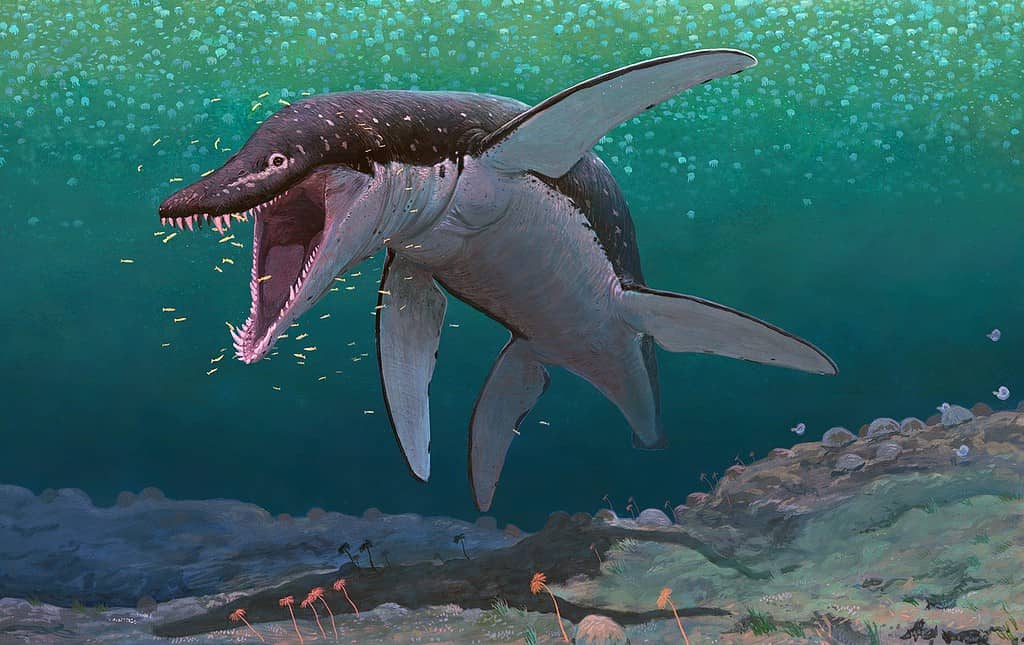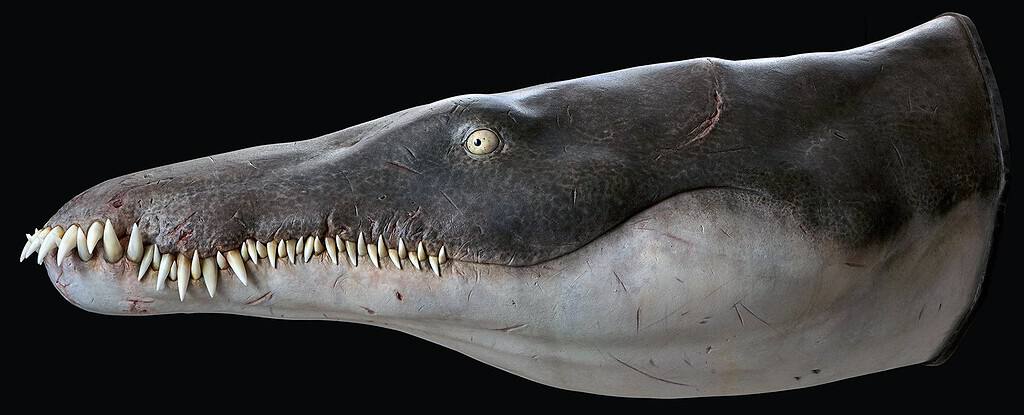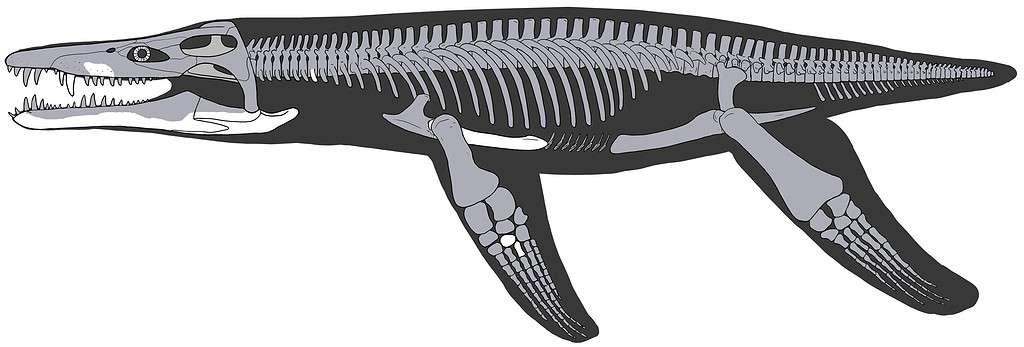When dinosaurs ruled the land, a group of large marine reptiles called plesiosaurs ruled the seas. The pliosaurs were a part of this plesiosaur group. They measured up to 10 meters long (33 feet). These “water dinosaurs” had crocodile-like short-necked forms with fins, large heads and massive toothed jaws. With these tools they hunted almost anything they could find.
Pliosaurs emerged over 200 million years ago, but didn’t turn into apex predators overnight. In fact, researchers aren’t exactly sure when they became a dominating force in the seas. This is where the new fossil comes in.

An early ocean terror
The fossil dates back to 170 million years ago, from a period called the upper Bajocian (in the Middle Jurassic). It was found in the Marnes de Gravelotte region of Lorraine, northeastern France.
“The remains were unearthed in 1983 from a road cutting near Metz in Lorraine, north-eastern France. Palaeontology enthusiasts from the Association minéralogique et paléontologique d’Hayange et des environs recognised the significance of their discovery and donated the fossils to the Natural History Museum in Luxembourg”, said co-author Ben Thuy, curator at the Natural History Museum in Luxembourg.
Named ‘Lorrainosaurus keileni,’ this fossil was initially mistaken for a different species but later recognized for its unique characteristics. Notably, the fossil includes an almost complete mandible, measuring 1.33 meters, indicative of the macropredator nature of these early giants.
“Lorrainosaurus was one of the first truly huge pliosaurs. It gave rise to a dynasty of marine reptile mega-predators that ruled the oceans for around 80 million years,” explains Sven Sachs, a researcher at the Naturkunde-Museum Bielefeld, who led the study.

Not much is known about pliosaurs of that time, which makes this new finding all the more important.
“Our identification of Lorrainosaurus as one of the earliest mega-predatory pliosaurs demonstrates that these creatures emerged immediately after a landmark restructuring of marine predator ecosystems across the Early-to-Middle Jurassic boundary, some 175 to 171 million years ago. This event profoundly affected many marine reptile groups and brought mega-predatory pliosaurids to dominance over ‘fish-like’ ichthyosaurs, ancient marine crocodile relatives, and other large-bodied predatory plesiosaurs”, adds Daniel Madzia from the Institute of Paleobiology of the Polish Academy of Sciences, who co-led the study.
Formidable predators
The dental morphology of Lorrainosaurus, featuring large, robust conical teeth without cutting edges, provides insights into its feeding habits. They would likely have consumed large fish and other aquatic tetrapods. This contrasts with the curved, pointed teeth of earlier marine reptiles adapted for different prey.

Overall, the species would have measured around 6 meters long, but other pliosaurs grew even bigger.
“Famous examples, such as Pliosaurus and Kronosaurus — some of the world’s largest pliosaurs — were absolutely enormous with body-lengths exceeding 10 m. They were ecological equivalents of today’s Killer whales and would have eaten a range of prey including squid-like cephalopods, large fish and other marine reptiles. These have all been found as preserved gut contents”, said senior co-author Benjamin Kear, Curator of Vertebrate Palaeontology and Researcher in Palaeontology at The Museum of Evolution, Uppsala University.
As not much is known about how pliosaurs emerged as dominant predators, this fossil fills a critical gap for paleontologists. Lorrainosaurus illustrates a pivotal shift in the predatory hierarchy of ancient oceans. As these early pliosaurs evolved, they not only grew in size but also in their hunting capabilities. Before long, they dominated their marine environments. The study of Lorrainosaurus and its relatives helps paleontologists understand how marine predators adapted and thrived over millions of years, influencing the biodiversity of the seas.
“Lorrainosaurus is thus a critical addition to our knowledge of ancient marine reptiles from a time in the Age of Dinosaurs that has as yet been incompletely understood”, says Benjamin Kear.
The study was published in Scientific Reports.









